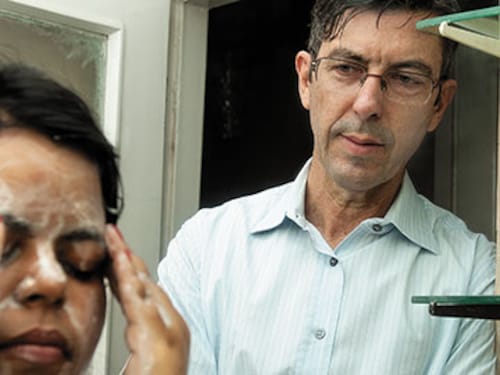L'Oreal's Lessons From Indian Homes
L'Oréal India's Pierre-Yves Arzel says home visits helped him understand Indians' relationship with water, what beauty products they use and why


Name: Pierre-Yves Arzel
Age: 54
Designation: Managing Director, L’Oréal India
Career: Joined L’Oréal in 1985 served as the MD in Finland, Korea, Canada, Japan, UK & Ireland
His India insights
There are 66 skin types 44 are in India
Having 1.2 billion people doesn’t mean there are 1.2 billion consumers
Indian women experiment with colours of clothes in the West, women play with shades of make-up
I had never come here [India] before—not even on vacation. I definitely had a very wrong impression of India, the kind you get by reading books. When you don’t know a country, you are always influenced by the clichés that tell you only a part of the truth.
I’ve been very surprised. I knew there are plenty of languages and different states, but I wasn’t aware of the amazing diversity of the country, of the different types of people [here]. L’Oréal has studied all skin types in the world and we have found 66 skin types, of which 44 are in India.
I’ve been working in three different continents: Europe, Asia (mostly in Korea and Japan), and North America. In Japan, it’s very homogenic you probably have three to four skin tones and no more. Koreans have one or two skin tones. In the US, you have mixed skin tones. In London, you see a lot of diversity because 50 percent of the people there are not British with white skin.
EVERYONE’S NOT A CONSUMER
India is my first real emerging economy. It’s very new to me and it’s hard to manage a business in an emerging market as specific as India. It has a huge number of people spending just a little bit, and that too, not very often.
Contrast that with the Japanese market, where everyone is affluent and is conscious about beauty, but where price points are not the main point. What matters most is the quality, never the price.
A lot of people tell me that with 1.2 billion people it must be very easy to do business there [in India]. Or that India has a huge middle class, which is a fantasy for your business. But here, you learn very quickly that just because there are 1.2 billion people [doesn’t mean] there are 1.2 billion consumers. You learn that a lot of figures circulating about India are not true. Like: There are 500-600 million middle class consumers. Also, the market isn’t easy. It’s very tough, very competitive.
India is much more than a country it’s a continent, a different planet. When you come with myths, you spend a few weeks deconstructing those first impressions.
THE INDIAN CONSUMER
Some say the Walmarts or Tescos of the world will kill the kiranas in India. That is the biggest myth. It will never happen. And the kiranas can be seen as a very archaic store or a very modern type of retail. Which other retailer delivers a bottle of shampoo at your home for free, that too within 10 minutes? Which other retailer gives you one-month credit at zero percent interest? Carrefour is not able to do this.
I try as much as possible to be out of office to understand what’s going on [around]. We do some home visits. We see how [people] perceive beauty products, what their beauty routine is, what products they use and why. In doing so, what’s interesting is, you go and see where these people live they invite you to their places you visit their bedrooms and bathrooms and see how they live.
The bathroom is always different. Depending on the social class, it can be very basic. In the West, a lot of money is invested in a bathroom and it is getting bigger and bigger, whereas in India, everyone shares [a bathroom] and the space is much more cramped.
The home visits give you an understanding of something which is absolutely crucial: Their [people’s] relationship with water. My driver gets just an hour of [running] water every day. This changes everything. He doesn’t live in a village though he lives in Bandra [an upmarket suburb of Mumbai].
IDEAS OF BEAUTY
That is why we are developing fast-rinse shampoos or ones that foam very quickly, where you don’t need a lot of water. That’s the key.
The aspirational standards of beauty [here] are quite specific. Hair is the key, eyes are very important, and, of course, a fair skin tone.
There are also the physical aspects of a typical Indian beauty. Hair: Honestly, I’ve never seen such beautiful hair in my life. When I say beautiful, I mean, it’s long, very long, and quite healthy most of the time. Eyes: They have to be as big as possible. Body: Not so much [is considered in the aspirational standard]. It’s becoming a part of the beauty routine [now] but it wasn’t thus far.
Here, you experiment with colours of your clothes, while in the West, women play with shades of make-up. The way Indian women play with colours is quite extraordinary. Whatever their social class is, you never see a sari-clad woman who’s not looking good and this attitude to colour is quite unique.
(As told to Nilofer D’Souza)
First Published: Mar 01, 2013, 05:27
Subscribe Now